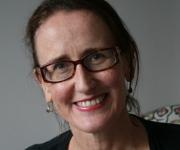BACK in 2010, I raised a question about why Australian hospitals and health care providers have been so much slower than their overseas counterparts to engage with patients through social and other online media.
A survey of 935 Australian hospitals had found a grand total of three hospital blogs, two official Facebook pages and one Twitter account between the lot of them.
Well, it seems nothing much has changed.
Perth emergency physician Dr Mike Cadogan, who conducted the 2009 survey, has just released the findings of his 2012 update and it doesn’t make cheerful reading for those who believe the health system needs to find new ways of engaging with the public.
Dr Cadogan, one of this country’s leading online practitioners, has been disappointed to find genuine social media interaction between hospitals and their local communities has barely increased in the past 3 years.
Although there are more accounts on social media sites such as Facebook and Twitter than 3 years ago, most of these belong to health groups or fundraising bodies rather than individual hospitals, the survey shows.
Private hospitals are somewhat more active than public — perhaps because they see a financial benefit in attracting more patients — but you couldn’t say either sector is doing particularly well.
According to the survey, just five hospitals now have a dedicated Facebook page (four private and one public). Of the 111 Twitter accounts identified, only nine are run by individual hospitals and even these tend not to be used to allow genuine two-way communication with the public.
“Disappointingly most of the Twitter accounts are news streams offering little in the way of patient/healthcare provider interaction”, Dr Cadogan writes in his report on the findings.
In fact, the problem goes even deeper, as Dr Cadogan told me last week.
Many hospitals do not even have a properly functioning website to provide the information patients need. These days, that’s pretty much the equivalent of a 20th century hospital choosing not to list its phone number in the directory.
“Our hospitals don’t have even the most basic information on their sites”, Dr Cadogan says. “I tried looking up hospital websites to see if I could get a bus there and I gave up after 150. Not one of them had information about public transport on their website.
“And I get people coming into my adult emergency department with kids because they can’t find anything online to tell them where the nearest children’s hospital is.”
The UK is streets ahead of Australia, he says, with its NHS Choices website providing comprehensive information about health services in one easy-to-use — and interactive — website.
Compared with a failure to give the most basic information such as public transport details, the absence of hospitals on Facebook and Twitter might seem trivial, but Dr Cadogan believes it is a missed opportunity.
You only have to look at the way the Mayo Clinic in the US uses the new technology to see what can be done, he says.
The clinic uses social media to put out public health messages and research findings and to foster communication between health professionals and with the public. Its Twitter account (@MayoClinic) has 341 546 followers.
It’s not all bad news in Australia. Dr Cadogan identifies Alfred Health and Austin Health (both in Melbourne) and private hospital group Ramsay Health Care as among the better online operators in this country.
But we are still way behind other countries, which seems paradoxical when you consider that Australians have always been early adopters of new communications technologies.
Nearly 11 million of us have a Facebook account and much of our communication now takes place online and through social media.
If the health sector wants to communicate with the people it serves, it simply can’t afford to keep ignoring that fact.
Jane McCredie is a Sydney-based science and medicine writer.
Posted 30 April 2012

 more_vert
more_vert
The whole assumption in Jane’s article is that a hospital being on Facebook or Twitter would somehow help health delivery. How? The article makes almost no hint of how this might help patient care – it implies that being online is an end unto itself. Has Jane just been caught up in the “technology for technology’s sake” movement?
It reminds me of when all those news articles came out about the government trialling iPads in hospitals – I didn’t see one that actually bothered to look at what they would be used for or how they would help. The assumption was just that the presence of the iPad would help the patient’s recovery.
I agree with Jane McCredie that we as a profession cannot ignore the trend that social media is here to stay. Simply hoping to ignore it is not the answer. Although there are numerous risks there are also numerous benefits. Last week Facebook exceeded 900 million users. If Facebook was a country it would be the third largest in the world today. There are many useful sites on Twitter and Linkedin that regularly provide the latest medical information. The challenge for all of us, the profession and patients, is how we use these systems to improve care.
Is Jane McCredie being paid to promote twitter and facebook? I cant see any value in these kinds of sites. I must to confess to being on google plus-but only for my picasa photo albums, no “chats”. Only those interested in my photos respond. I dont really want anonymous strangers “chatting” to me online. I chat with friends and colleagues via email, (or SMS for those not near a computer), I interact with some professional sites online (like this one), but I already have more than enough “accounts” and “usernames” and “passwords” for more than one lifetime, and have no interest in any more!
A news item that missed the April 1st deadline is that Youtube, Twitter and Facebook are considering uniting to form one giant social media site-called YouTwitFace!